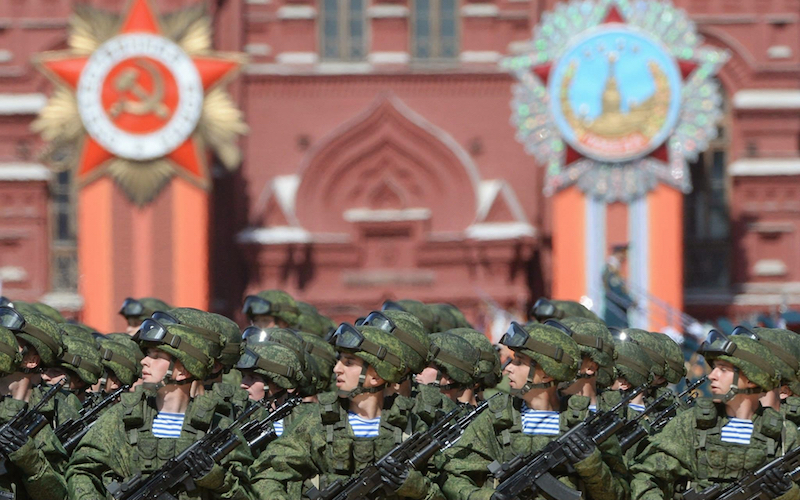
The Lagging Architecture of NATO Missile Defense
If there is one thing to take away from the 2015 National Military Strategy of the United States, it is that the geostrategic environment facing the U.S. now has evolved in ways entirely unexpected and at a pace far more rapid than predicted by the previous National Military Strategy published just four years prior. In fact, the new strategy — released on July 1st — opens with the recognition that the current global security climate is the “most unpredictable” state of international affairs in the past 40 years. To meet these emerging challenges, the United States has redefined what it sees as its greatest security concerns to include newer developments like Russia’s provocative foreign policy, marking a return towards focusing on state-level actors after a decade of policy primarily informed by extremist networks.
Yet, while the United States has realigned its national military strategy to meet the new concerns out of Moscow, NATO’s ballistic missile defense — in particular the presently underway “Phased Adaptive Approach” (EPAA) tasked with defending NATO’s European half — is lagging behind in its adaption to the unpredictable and ever-more-quickly evolving landscape. Despite the fact that the new U.S. military overview has returned both Russian provocations and “the proliferation of ballistic missiles, precision strike technologies…and weapons of mass destruction” to the top tier of threats facing the Alliance, the EPAA remains under construction as a missile defense system designed around the security environment of 2011. As stated by one speaker at the Atlantic Council’s recent United States and Global Missile Defense Conference, “the [NATO] bureaucracy is on auto-pilot,” a fact that could have very serious geostrategic repercussions down the line should it go unchecked.
The EPAA itself is a 2009 initiative aimed at protecting Europe from missile threats posed by Iran to major European cities and involves the gradual establishment and integration of various national systems into a single missile defense architecture for European NATO member-states by 2018.
While this covers one front of potential missile defense threats — and the only pressing regional missile threat at the time of the EPAA’s conception — the emerging Russian front is left largely unaddressed. With Russia’s increasingly bold foreign policy and its apparent dismissal of major aspects of the international order, the possibility is now present for the missile targeting of NATO allies by Russian rebels — a threat reinforced by the modernization of Russian strategic nuclear missile and medium-range missile capabilities.
Ironically, the narrative of Russia and NATO’s EPAA is one that has become something of a confirmation for the old adage “be careful what you wish for.” Since the earliest stages of NATO discussions regarding a Europe-wide missile defense program, Moscow has strongly criticized the initiative as anti-Russian and used the EPAA politically to justify the expansion of its own defense capabilities. Repeatedly, the U.S. has responded by stating that neither Washington nor NATO has deployed missile defense efforts “to affect the strategic balance with Russia or China.” Now, Russia has provoked the West to the point that U.S. and NATO missile defense efforts should be partially deployed with Russia in mind. Discussions of missile threats from Iran and North Korea can no longer omit Moscow from the picture, regardless of how unpleasant it is to recall Cold War-era posturing. The needed involvement of Russia in solving critical issues in Europe should not be forgotten, and NATO must not abandon attempts to strike a cooperative chord with the nation, but to leave Europe unprotected out of misplaced optimism would be a serious misstep for the Alliance.
Financially speaking, it is not desirable nor possible for NATO to construct a comprehensive missile defense system that covers the entire range of Russia’s missile capabilities — but there is no question that the necessary tweaks should be made to repurpose the EPAA in part for defense from the Russian front. It is undeniable that the internal dialogue amongst U.S. officials as well as within the broader NATO fora is aflame with recognitions of Moscow’s escalated behavior and discussions as to how to in response adapt the existing architecture. What is troubling about the current state of things is not a lack of understanding, it is the disparity between the slow pace of NATO missile defense paradigm change and the quickly evolving geopolitical landscape.
To be clear, there is no indication that Russia is seeking the kind of direct military conflict that a repurposed NATO missile defense system would protect from — but it is important to remember neither was Iran when the EPAA was first conceived, nor is it now. An EPAA that does not account for the emboldened Russian threat is a missile defense system that ultimately fails to do what it is intended to achieve at its very core: protect NATO’s European member-states from the region’s most prevailing missile threats. There are clear political and strategic hurdles in reassessing the existing NATO missile defense architecture to identify Russia as a threat, and NATO member-states have a difficult discussion ahead of themselves — but the reality has changed and the adjustment is necessary, at least for the time being.

